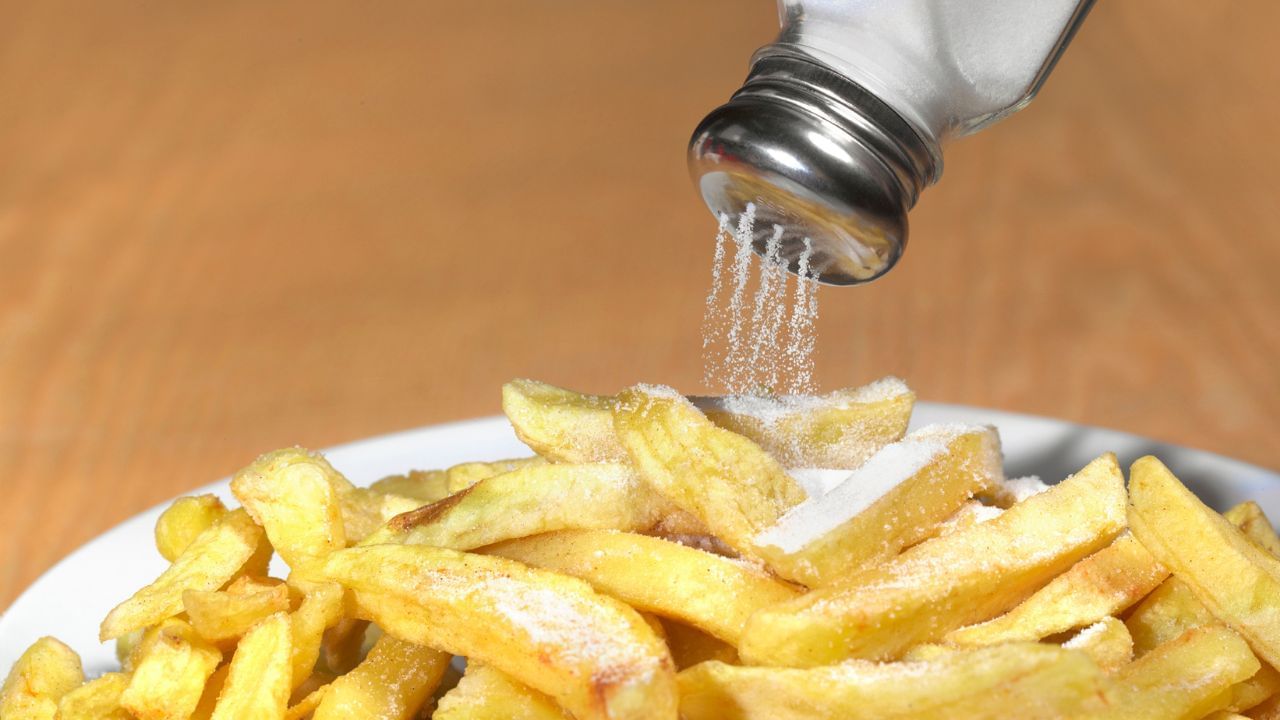Eating too much salt can be harmful for healthImage Credit Source: Getty Images
Excess salt consumption in India: Eating excessive salt in India is becoming a silent epidemic, due to which the problems related to high blood pressure, heart disease, stroke and kidney are increasing rapidly. Realizing this problem, scientists from the National Institute of Epidemiological (NIE) of ICMR have started a campaign to promote low sodium salt and motivate people to eat less salt. In this, with the help of health workers, efforts are being made to consult people in the villages, increase awareness and reduce salt intake through a pinch for change, so that heart related diseases can be prevented in the country.
Excessive salt intake by Indians is taking the form of a silent epidemic in India, which is increasing the risk of high blood pressure, stroke, heart disease and kidney diseases among the people. Scientists of the National Institute of Epidemiological Sciences of Indian Council of Medical Research (ICMR) have given this information. Scientists have begun community-based salt cut studies to solve this problem, as well as focus on low sodium salt options.
How much did the limit of eating salt in WHO decide?
The World Health Organization (WHO) has recommended consumption of less than five grams of salt per person per person per day, while studies have revealed that Indians living in cities are eating about 9.2 grams/days of salt, while in rural areas it is about 5.6 grams/day. Thus, the consumption of salt in the whole country is more than the fixed quantity.
What does the National Institute of Epidemiology say on eating salt
Dr. Sharan Murali, senior scientist at the National Institute of Epidemiological Institute (NIE) and the head investigator of the study, said that a great hope of changing this situation can become a low sodium salt. It is the form of salt in which a part of sodium chloride can be replaced with potassium or magnesium salts. Dr. Murali said, low intake of sodium helps in reducing blood pressure and keeps the heart healthy. Thus low sodium options become a meaningful option, especially for patients with high blood pressure. He said, only switching on low sodium salt can reduce blood pressure to 7/4 millimeter of mercury on average. This is a small change, which has a large effect.
Campaign to reduce the amount of salt in food in full swing
To deal with the problem of high salt consumption, NIE has launched a three -year intervention project in Punjab and Telangana. It also has the support of the Indian Council of Medical Research (ICMR). Dr. Ganesh Kumar, Senior Scientist of NIE involved in the study, said that the purpose of this research is to know that when the health workers working in the Health and Wellness Center (HWC) advise people to eat less salt, how much effect it has. Especially on those who are already patients of high blood pressure. This will help in understanding whether to eat their blood pressure and salt with this advice or not.
Dr. Kumar told that at the moment we are in the first year of this project and now our focus is on gathering initial information and preparing on the ground. At the same time, Dr. Murali said that the material that is being made to give advice to the people is not fully prepared. Our aim is to create a method based on their experiences with health workers working in village and locality. This is not just the job of giving information to the people, but it is an attempt to sit together and understand something better.
Promoting low-sodium salt (LSS)
To ensure that the method that would be adopted, the NIE team went to 300 shops in Chennai and conducted a survey. He saw how many shops are found in low salt salt ie low-sodium salt (LSS) and what is its price. In this survey, it was found that LSS was getting only 28% of the shops. In the supermarket, it showed a little more space i.e. 52% space, but in small grocery shops, only 4% of this salt was present.
The price of this LSS was also more than mango salt. While mango salt is available for about 2.7 rupees for 100 grams, salt with low sodium is available for 5.6 rupees i.e. more than double. Dr. Murali said that these figures show that there is very little demand for this salt among people, so even shopkeepers do not keep it. This means that people are not aware of this and it is not even getting it easily, that is, there is a shortage of both information and access.
A pinch of campaign for change –
To make people aware to eat less salt and increase talk about it, NIE has recently launched a campaign on social media a pinch for change. In this campaign, infographics, facts and small messages made in easy language have been used on social media. Its aim is to explain to people that salt is not only hidden from above, but also in food items. Also motivate people to adopt low salt options and prepare people to take the right decisions for heart health.
